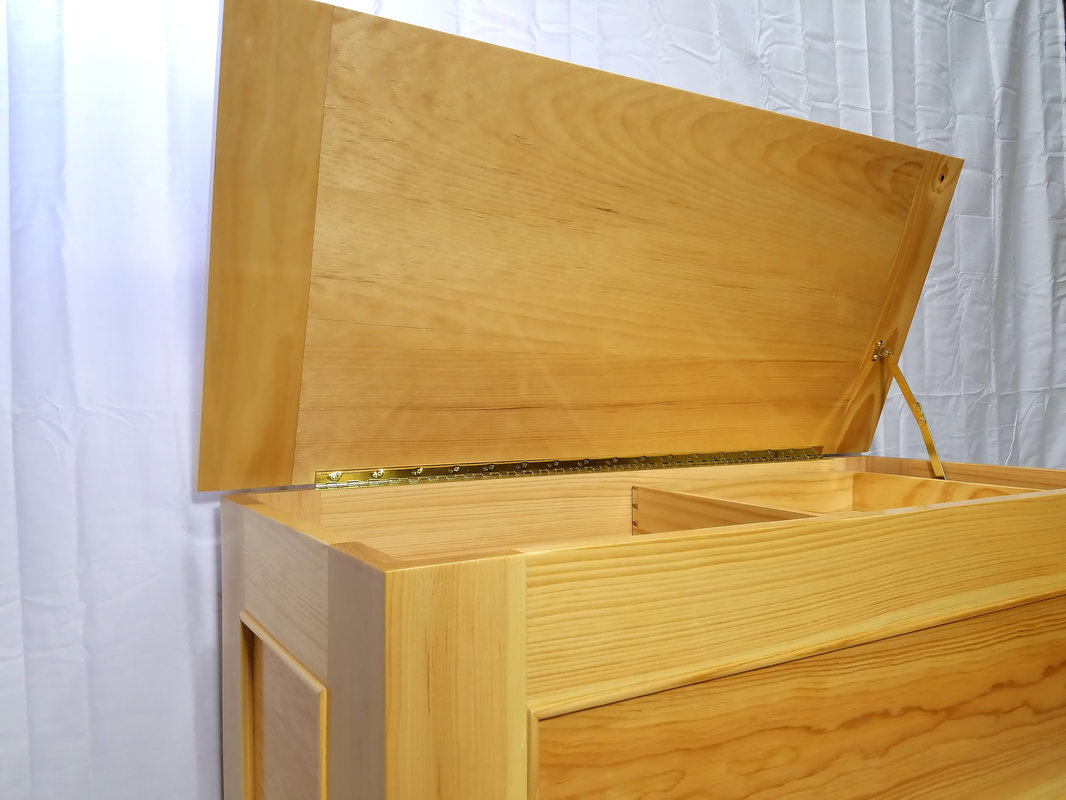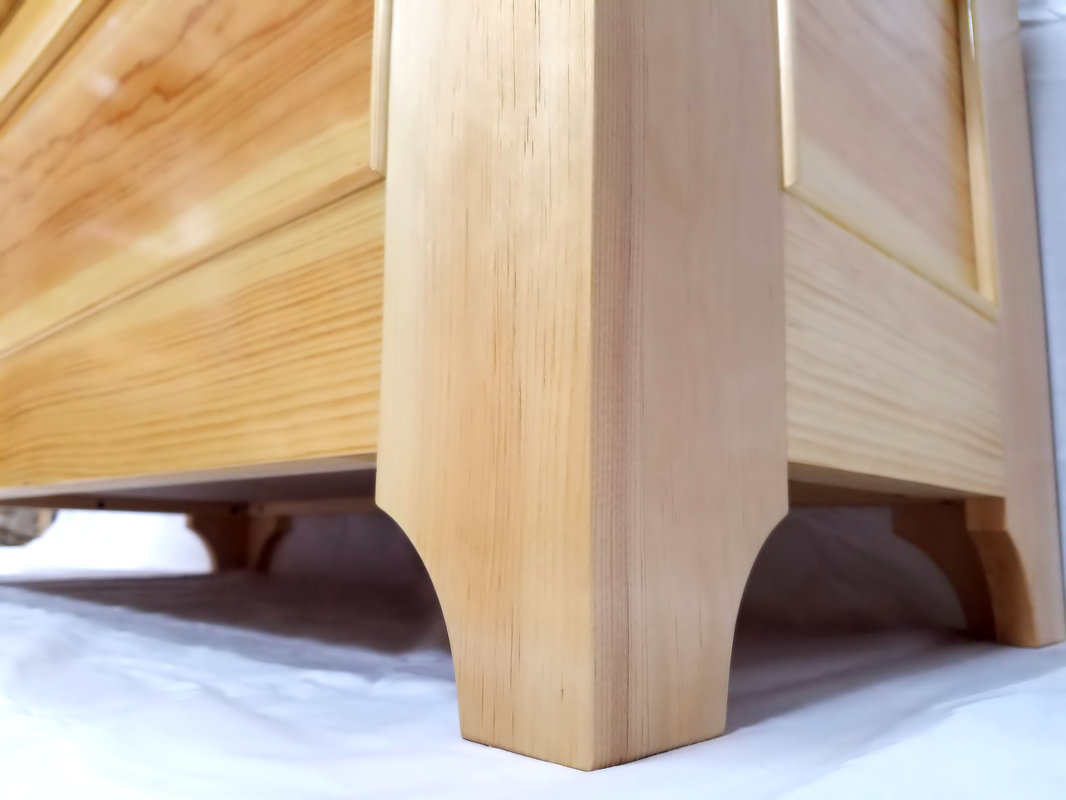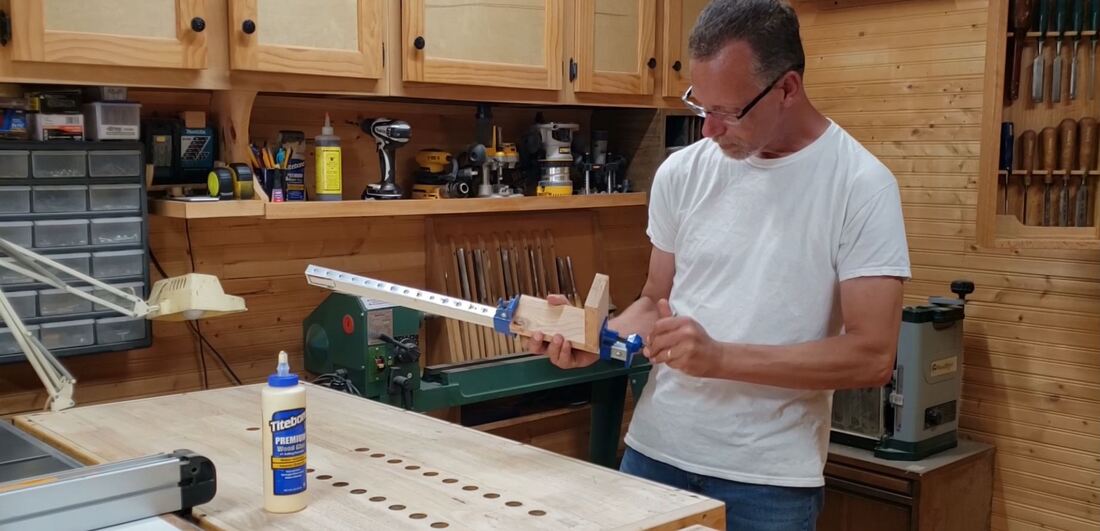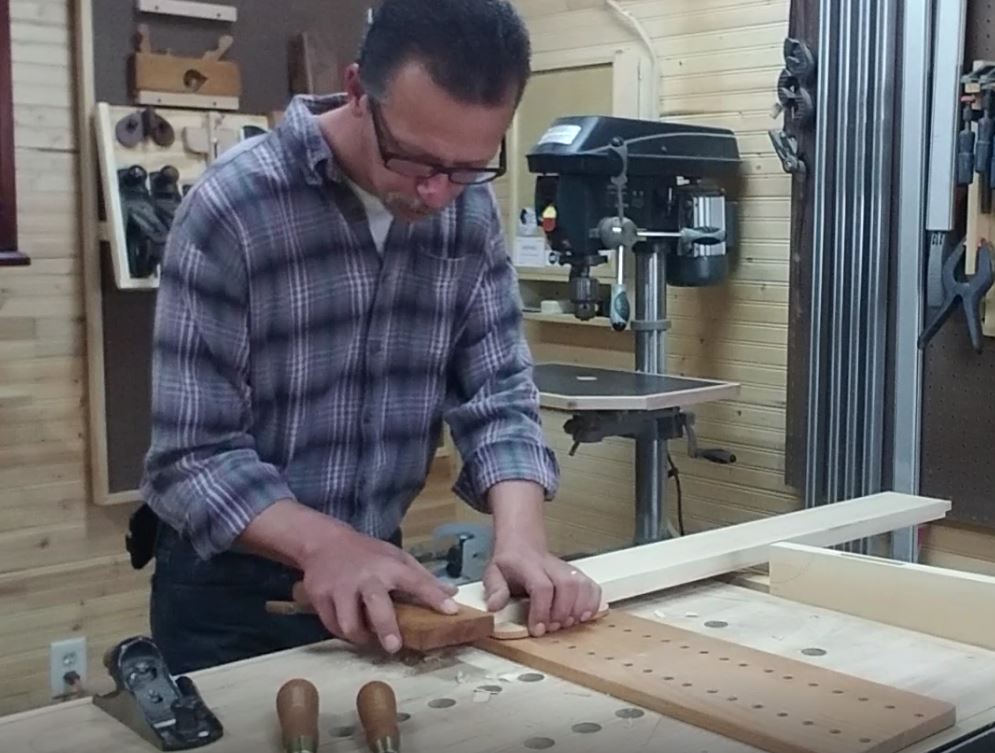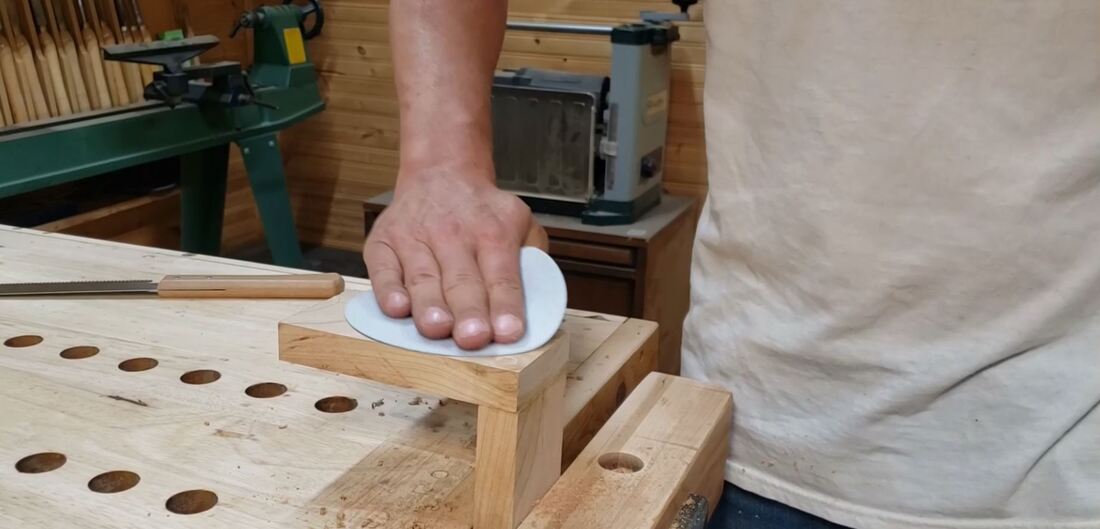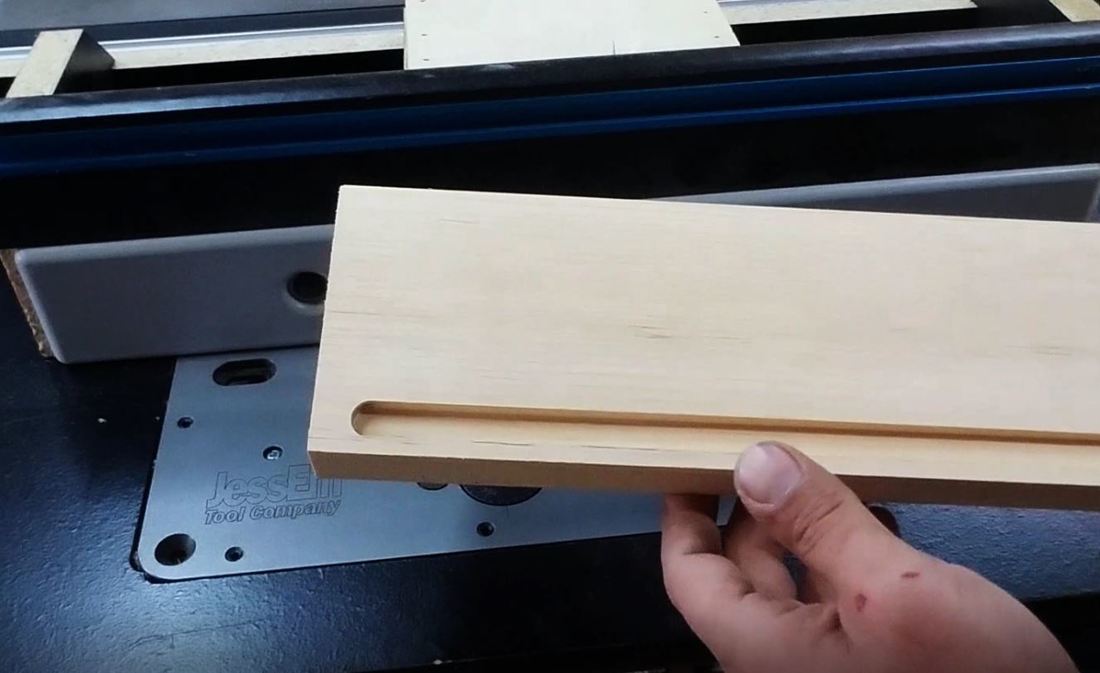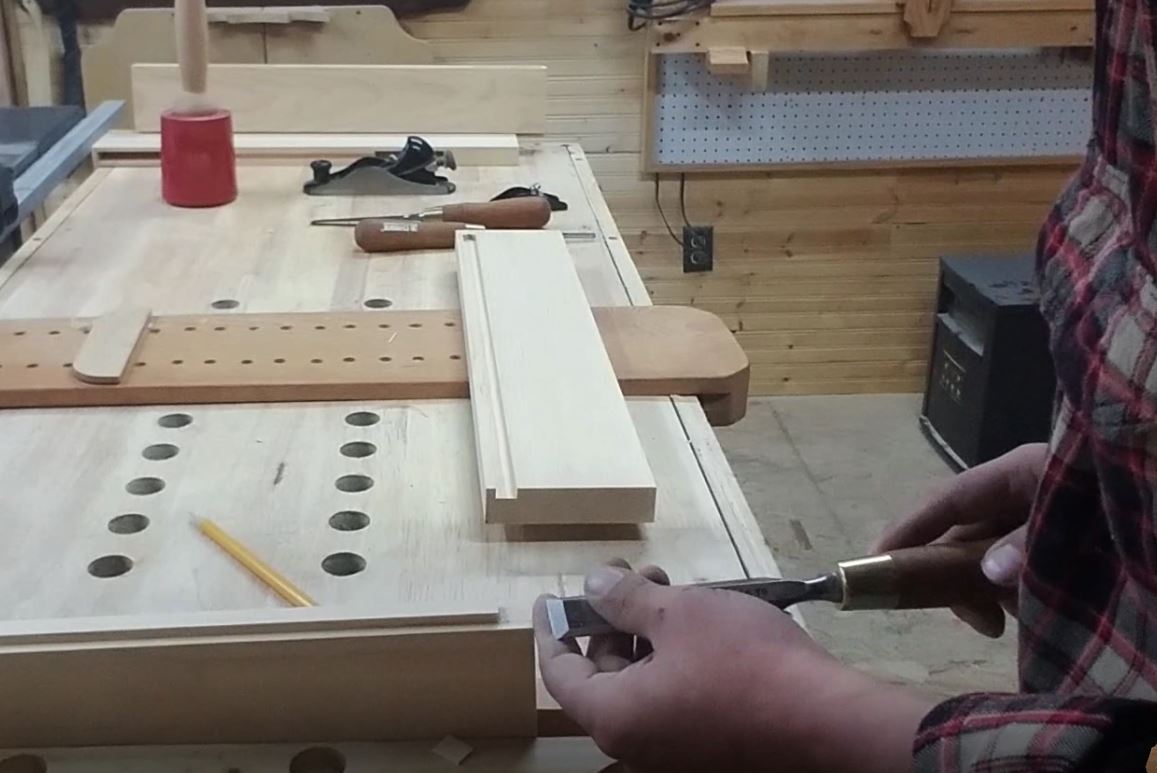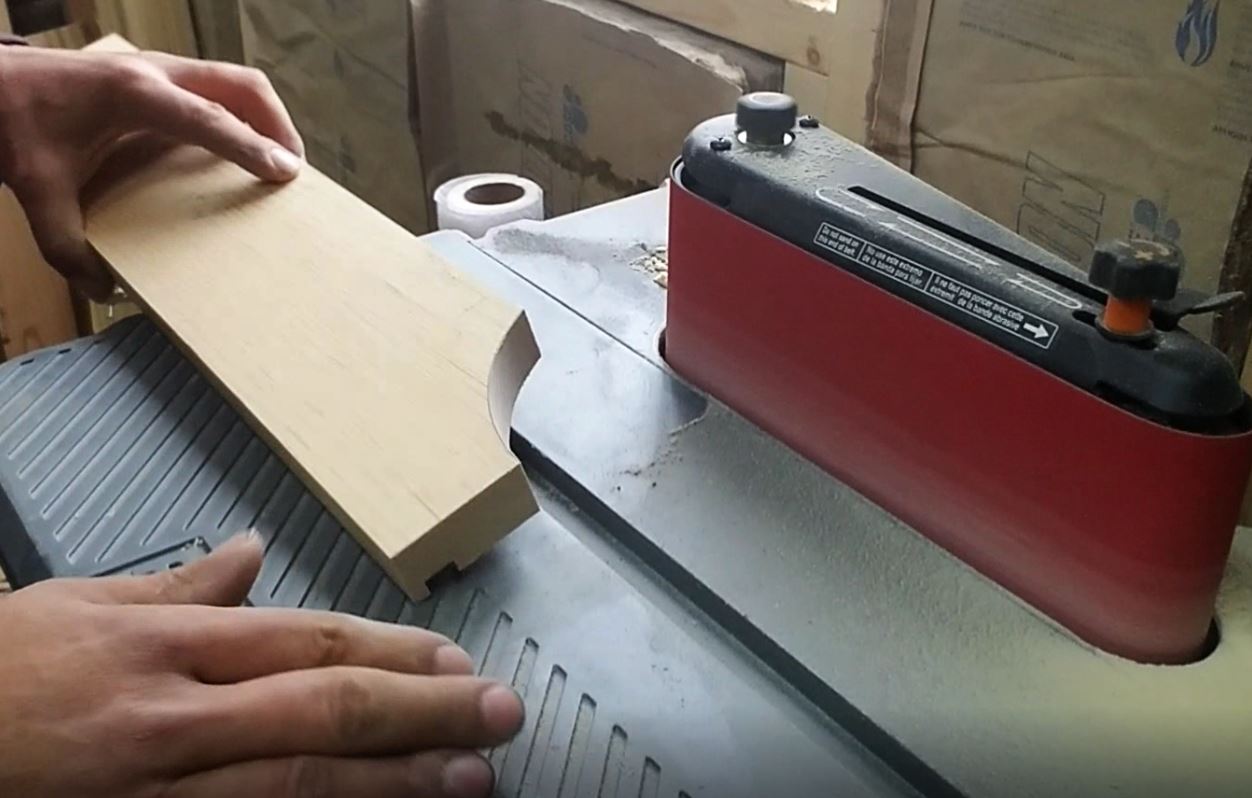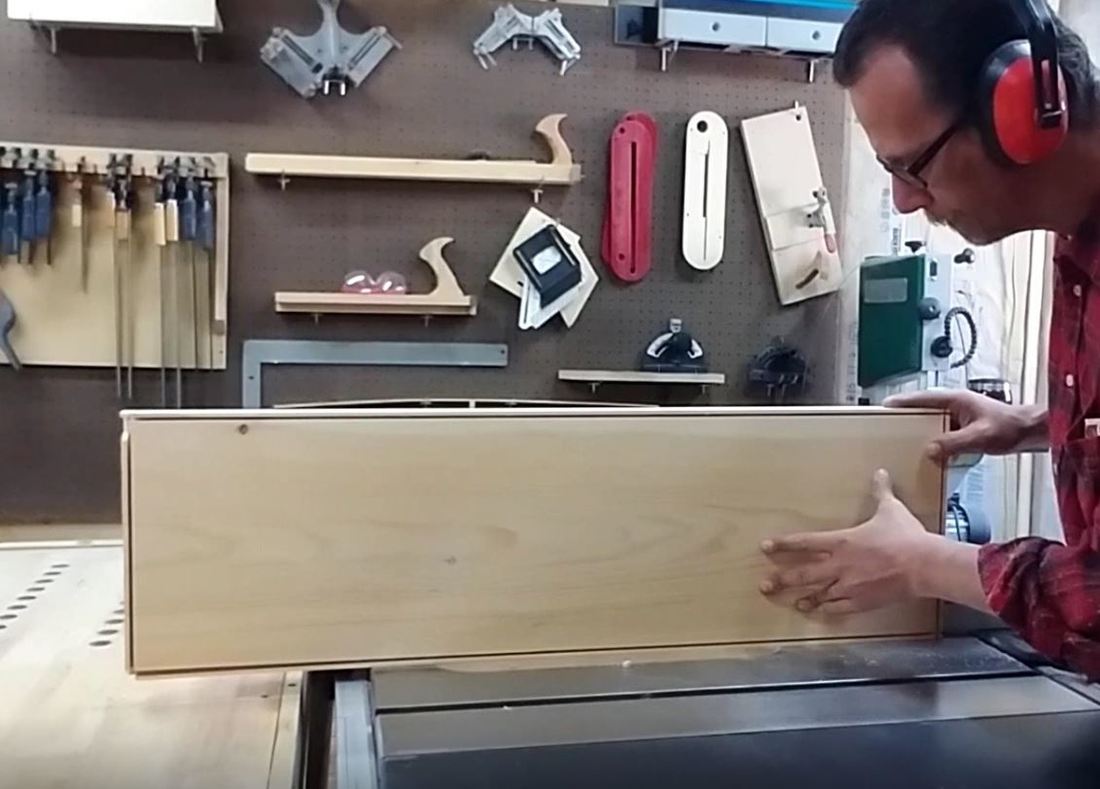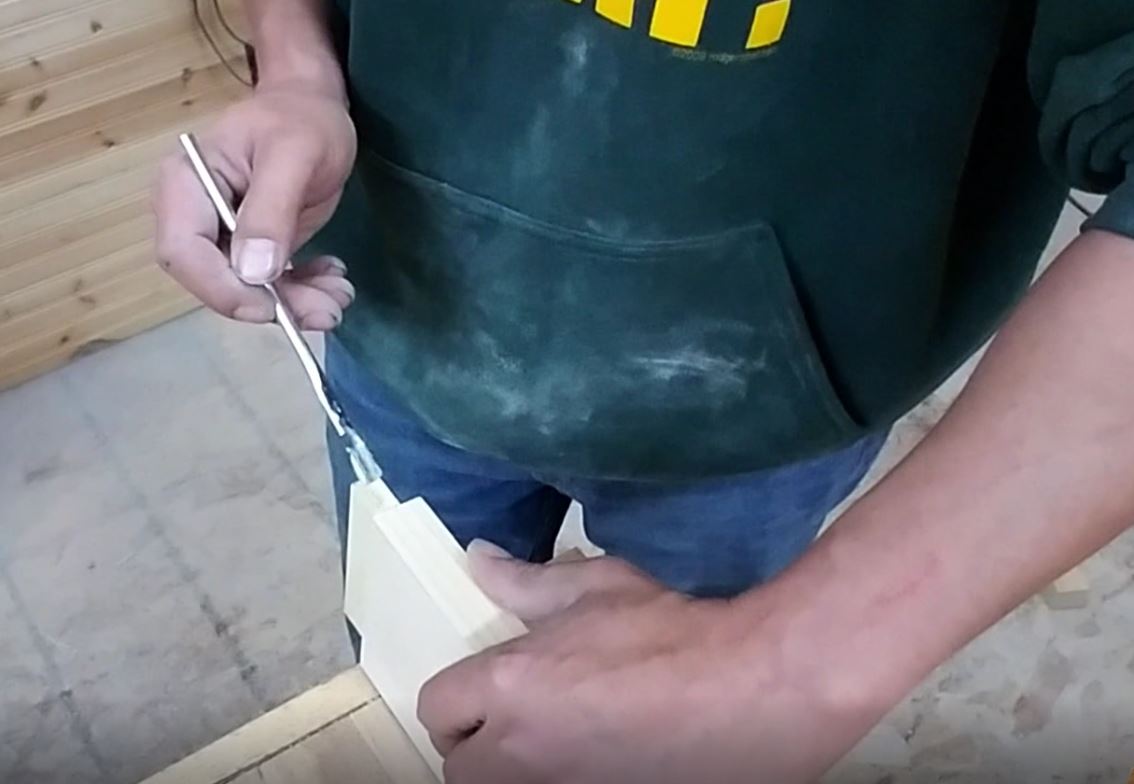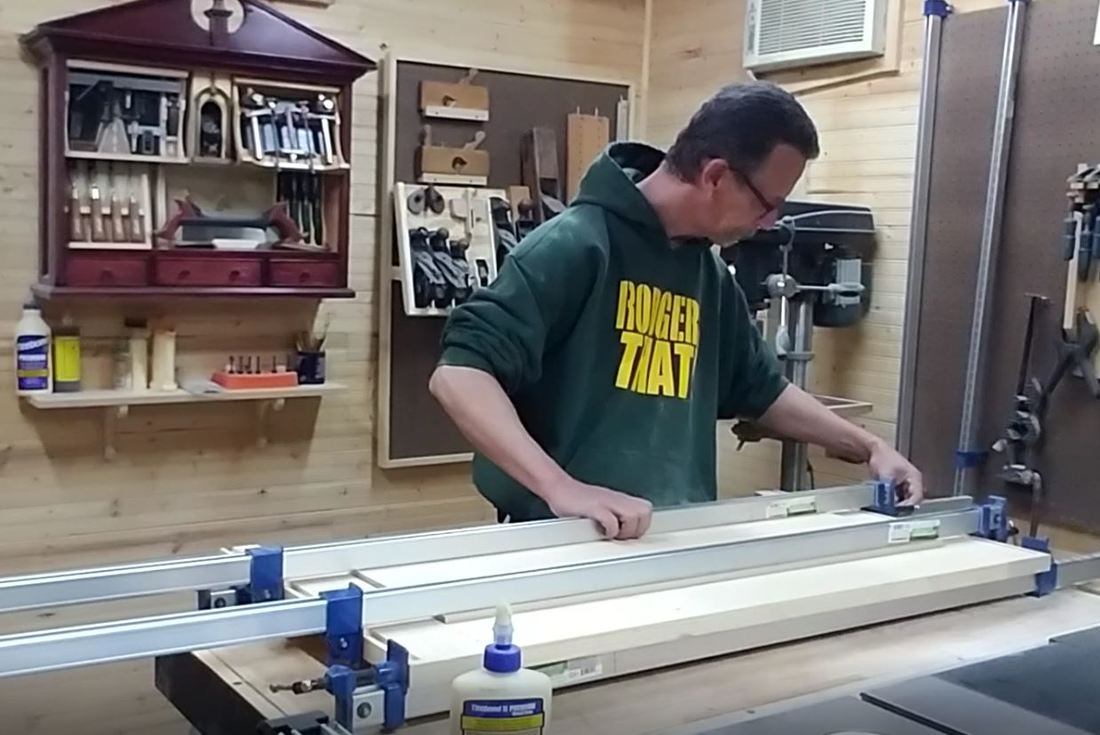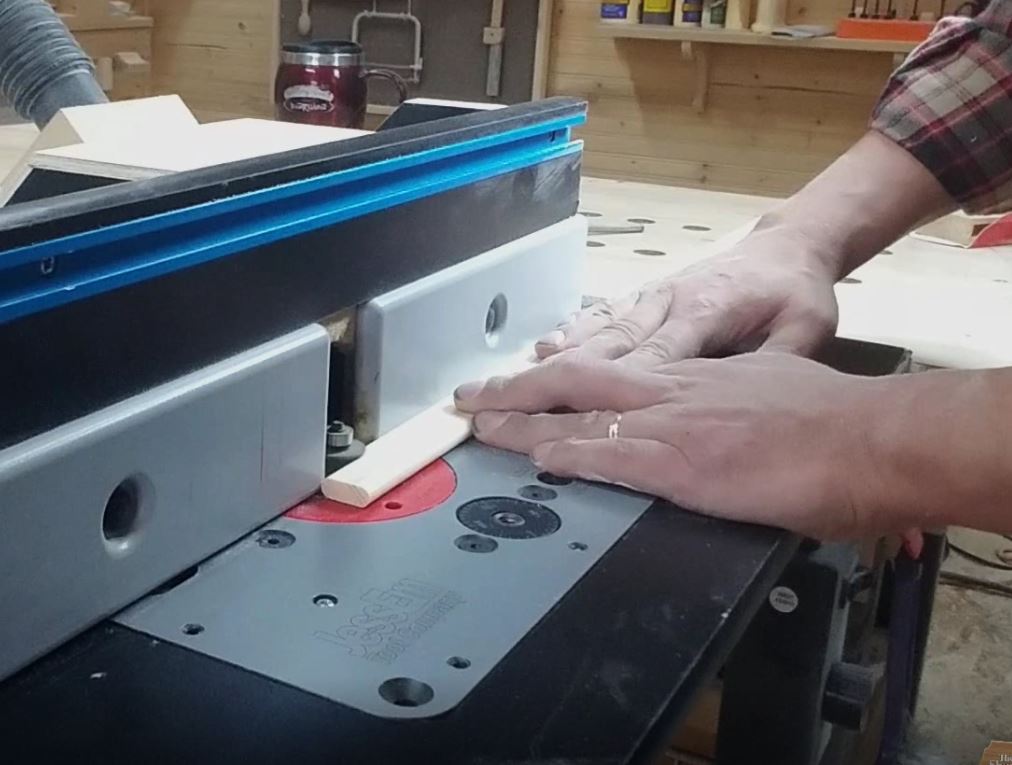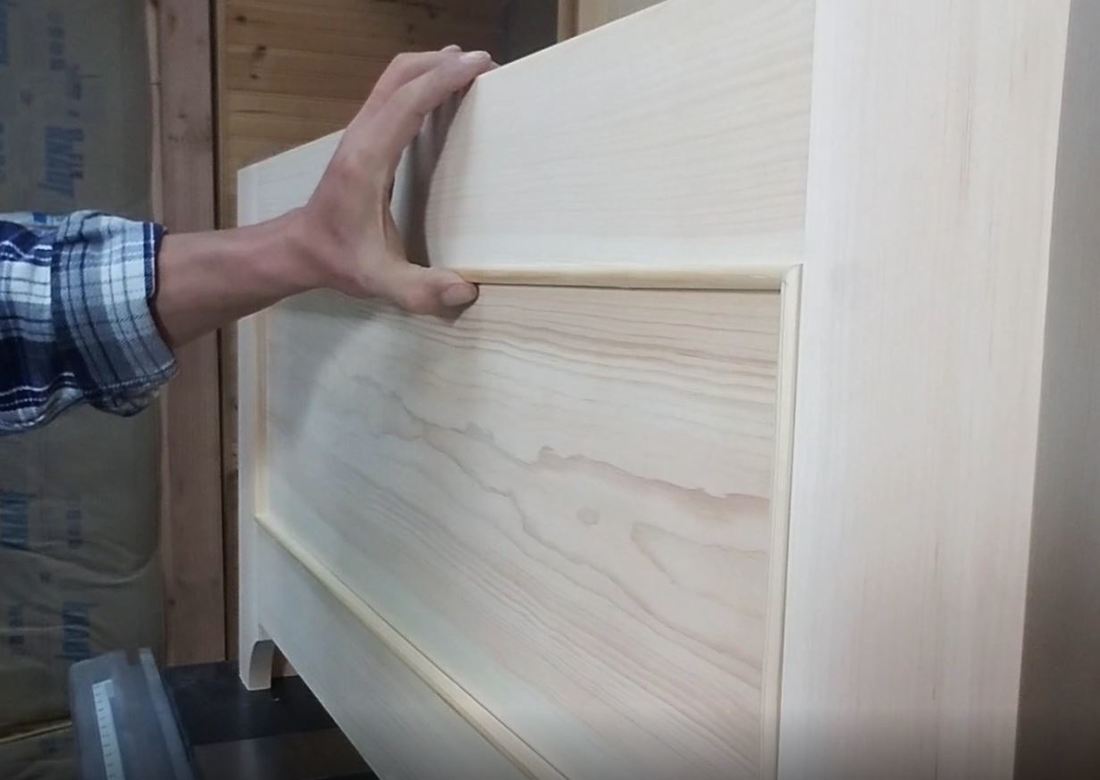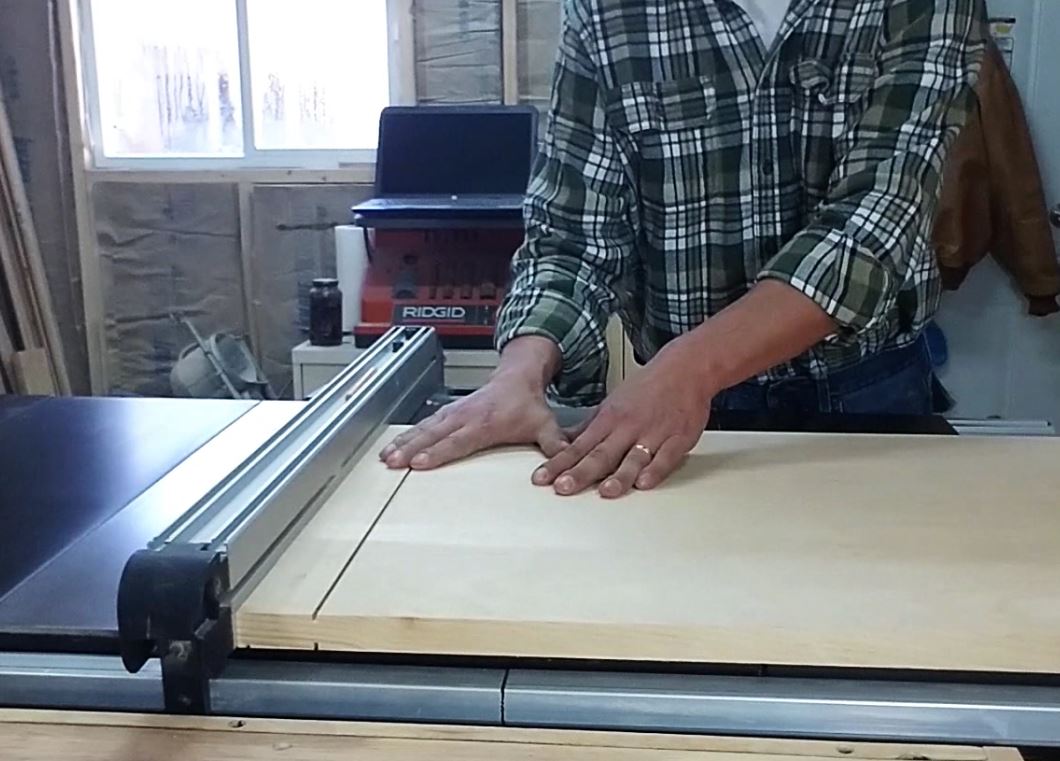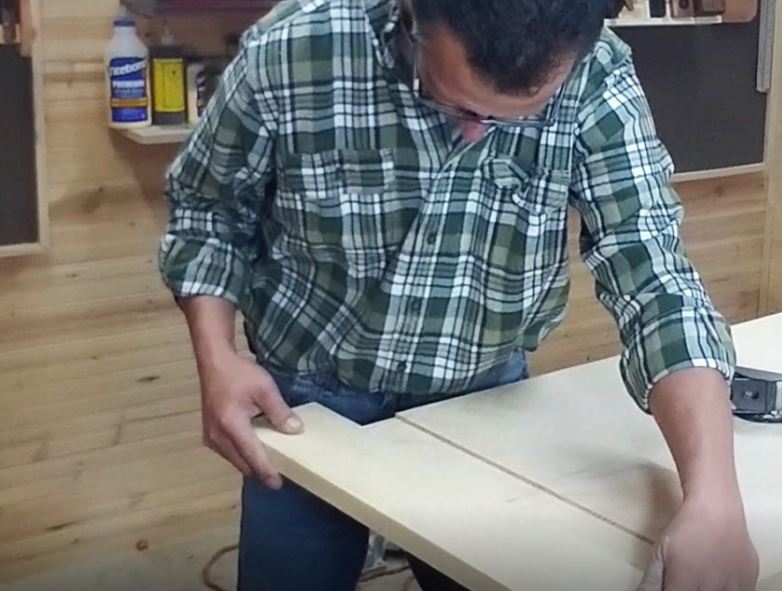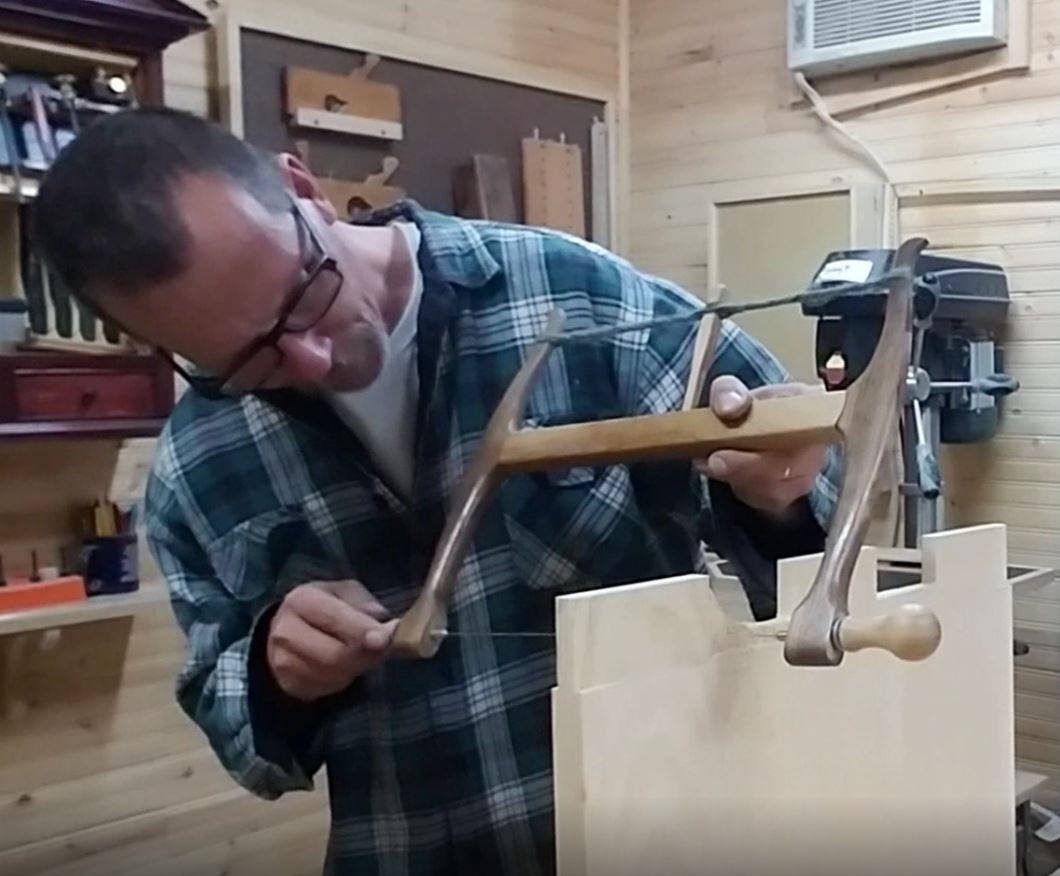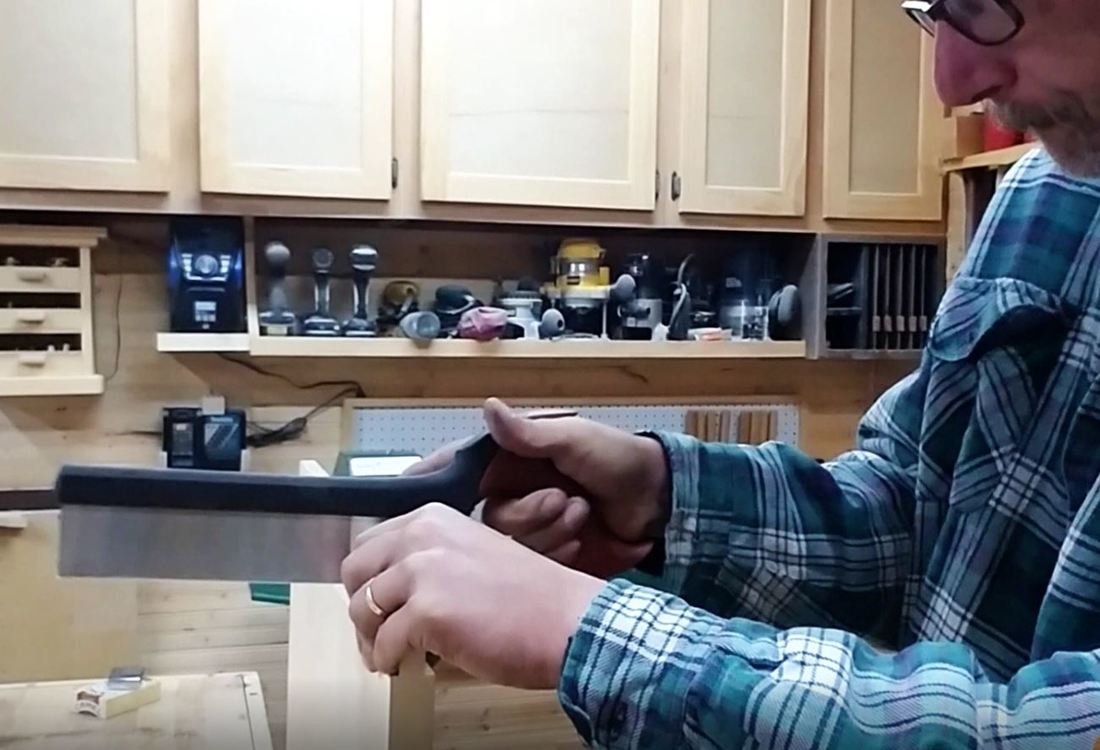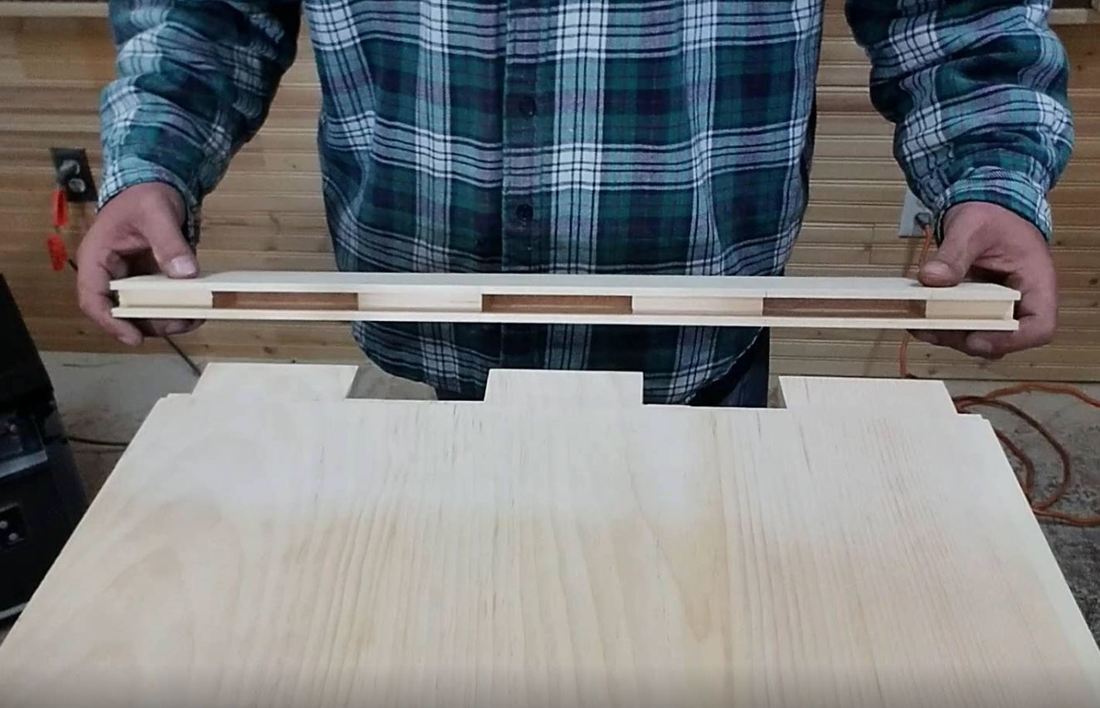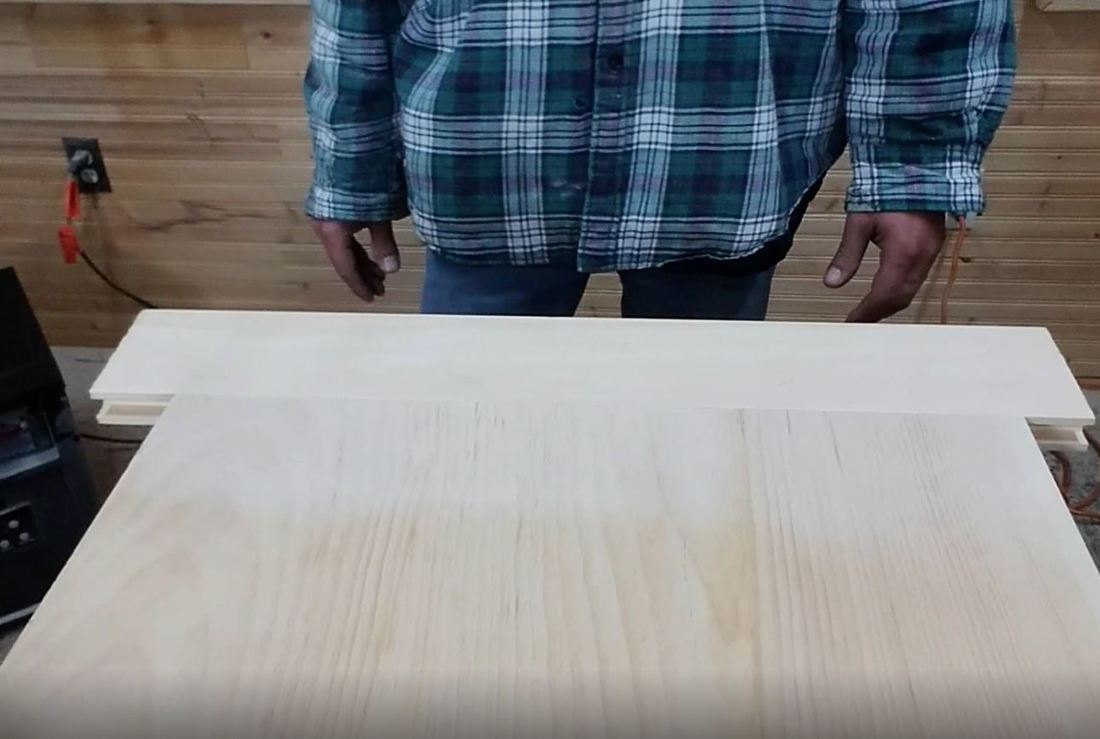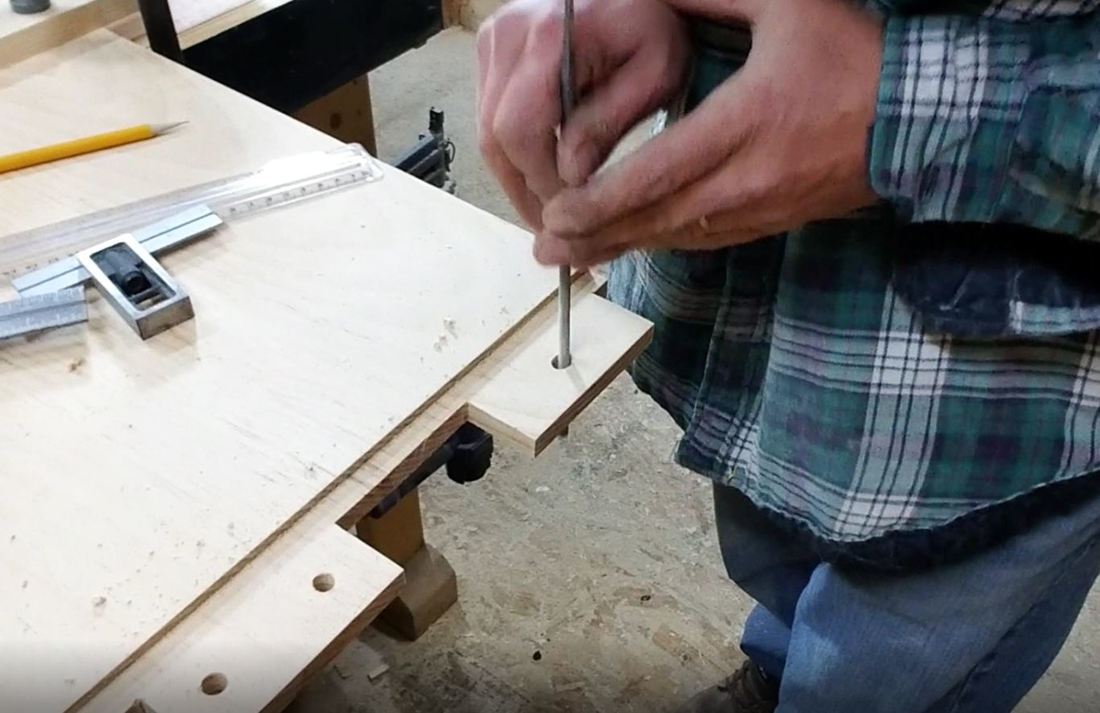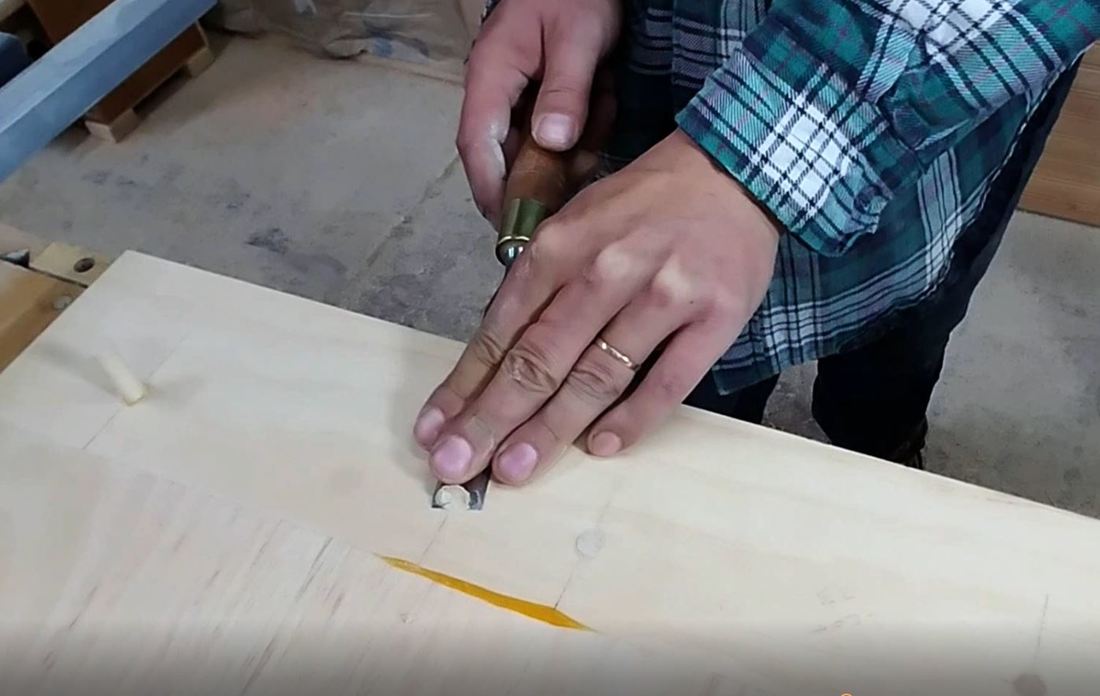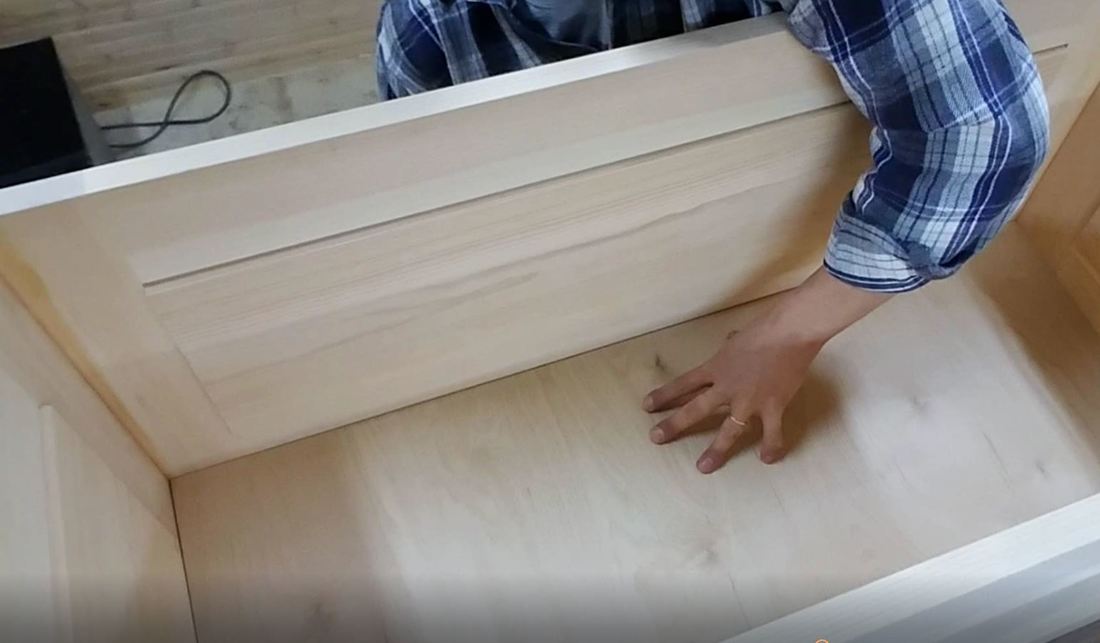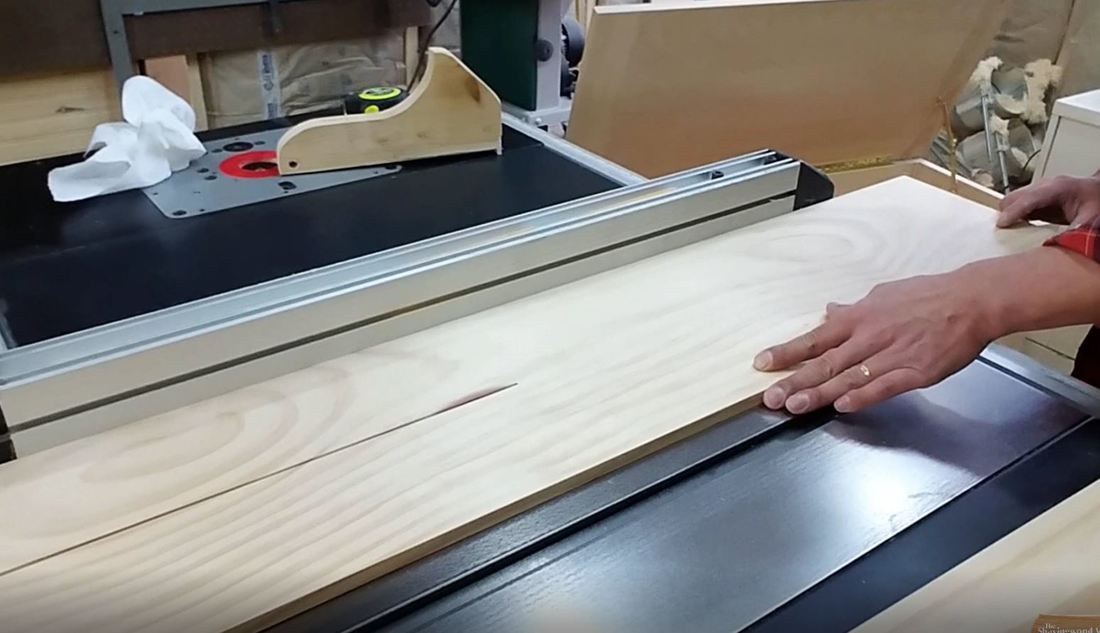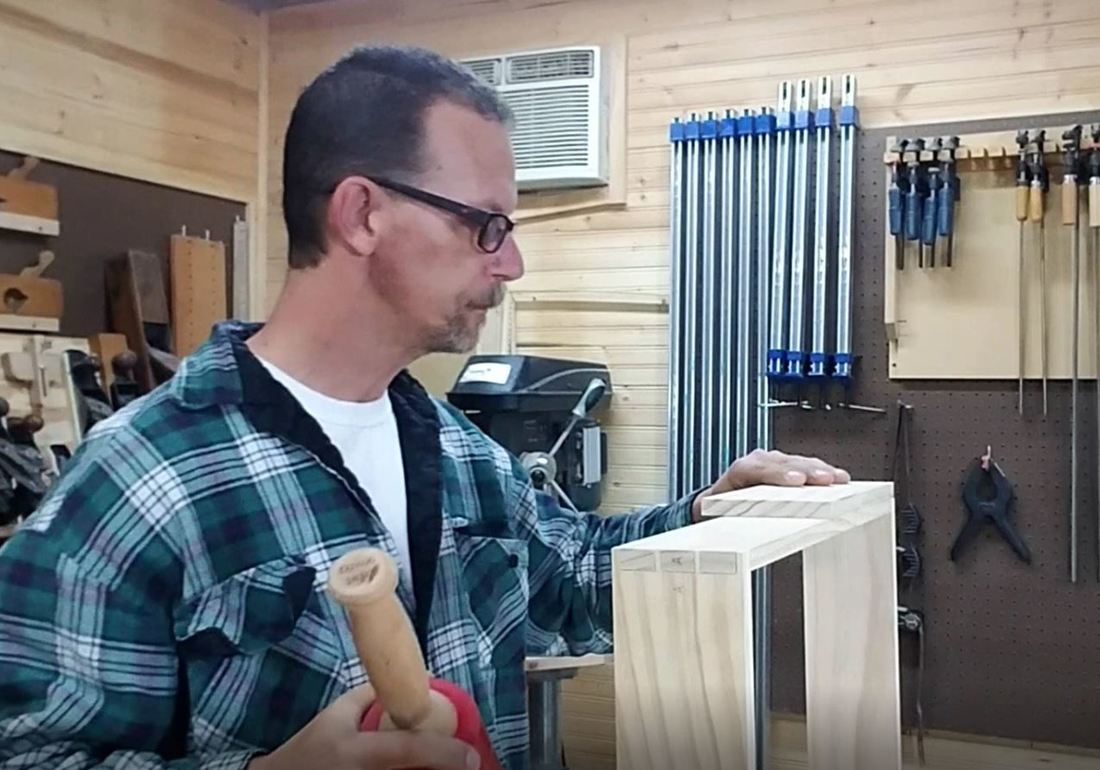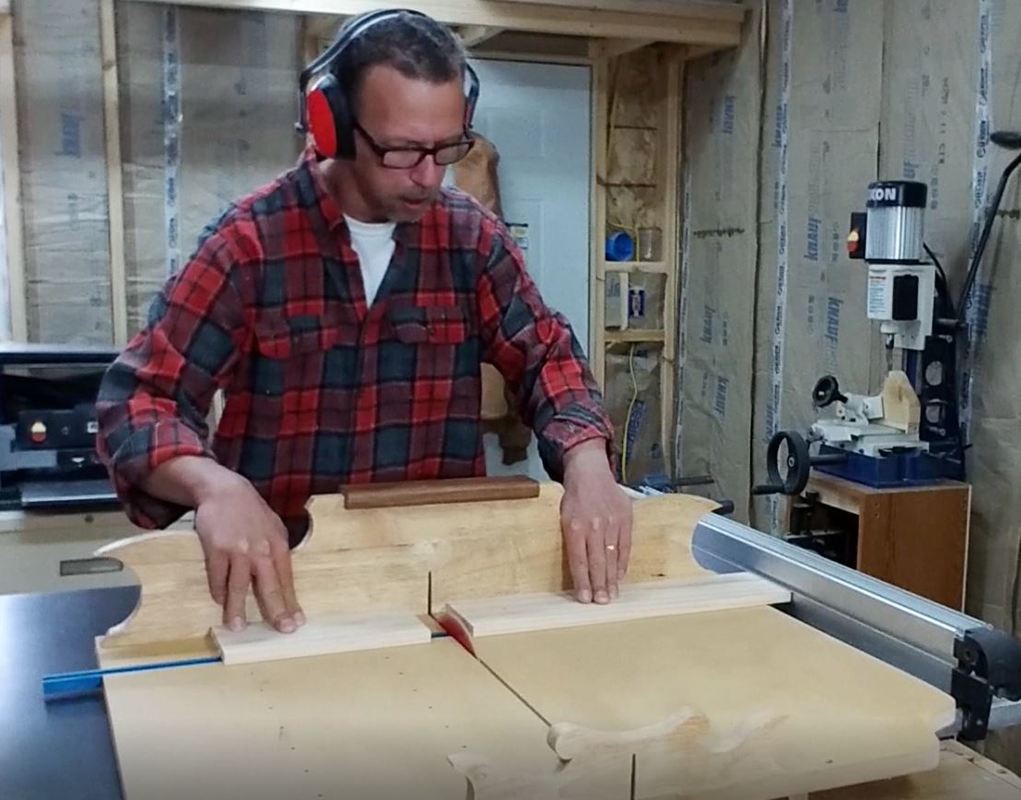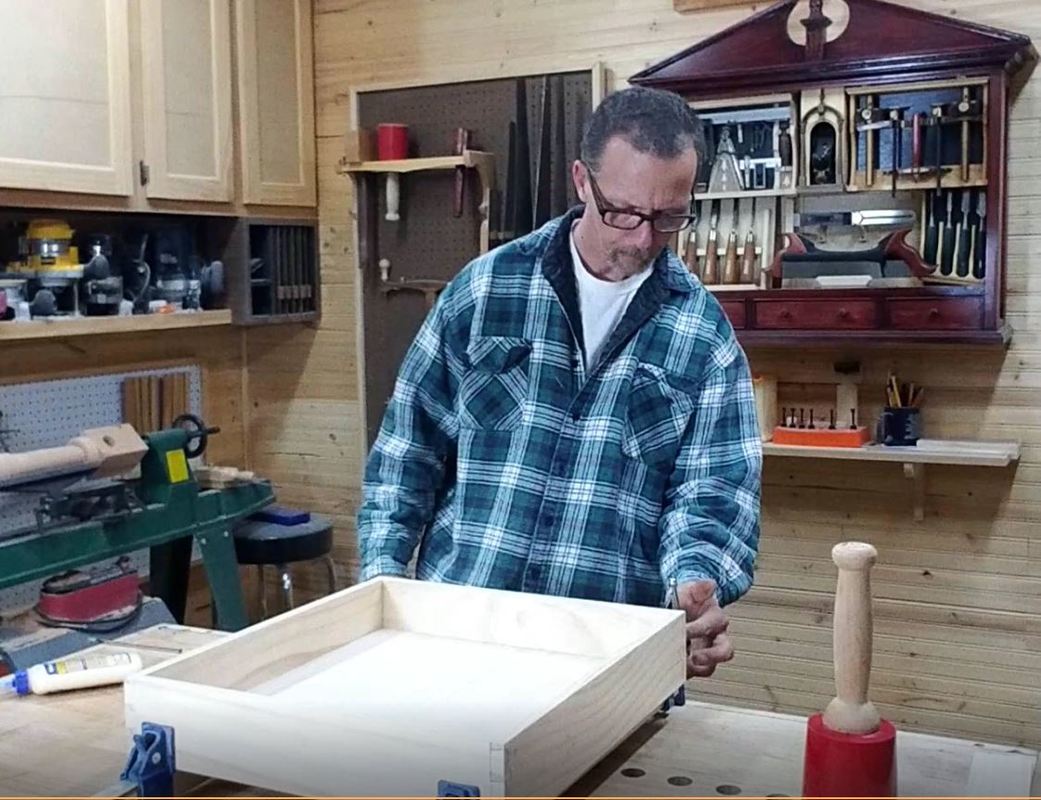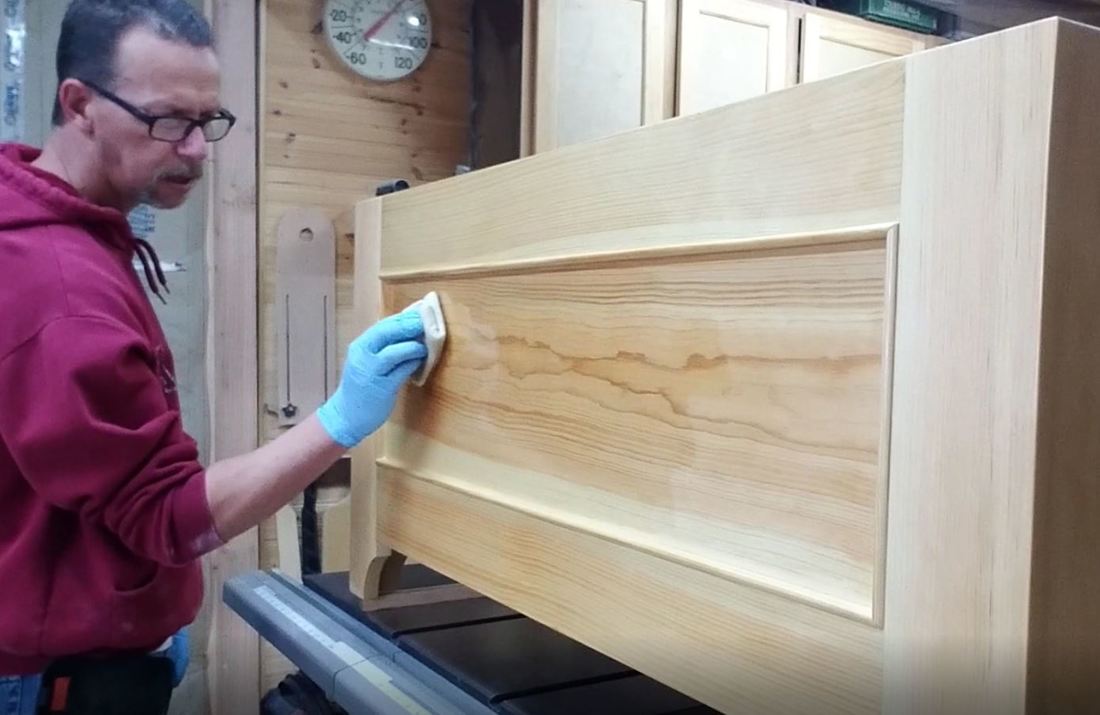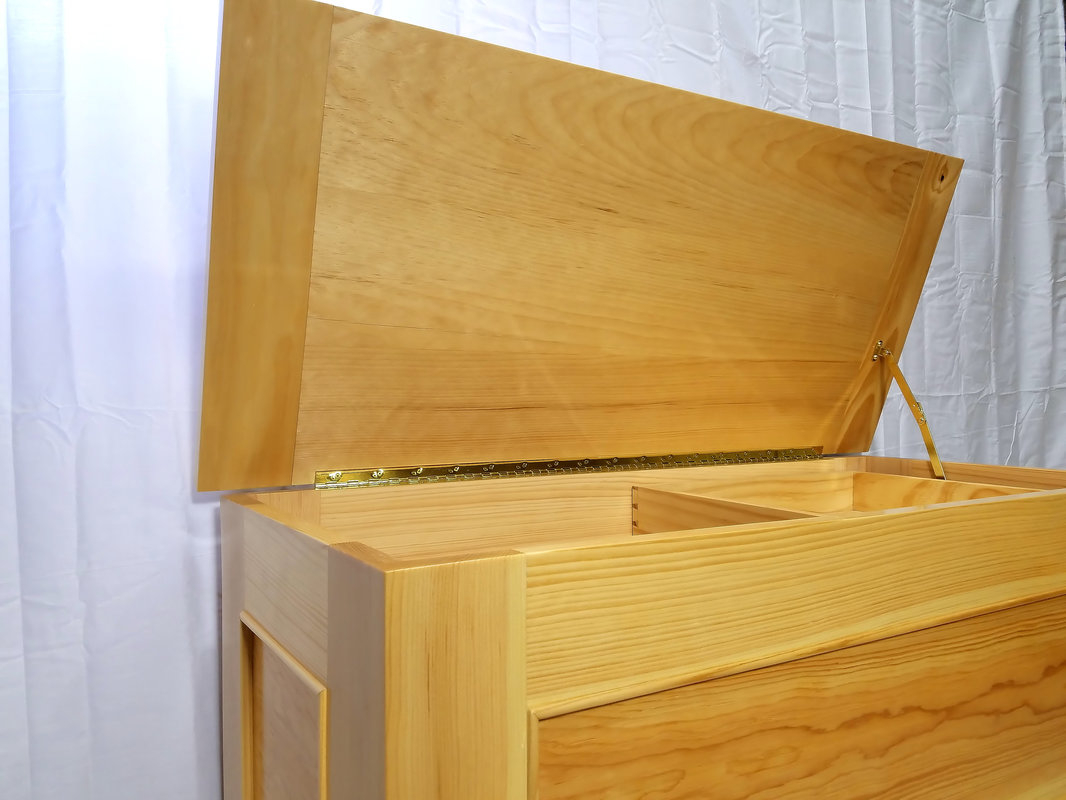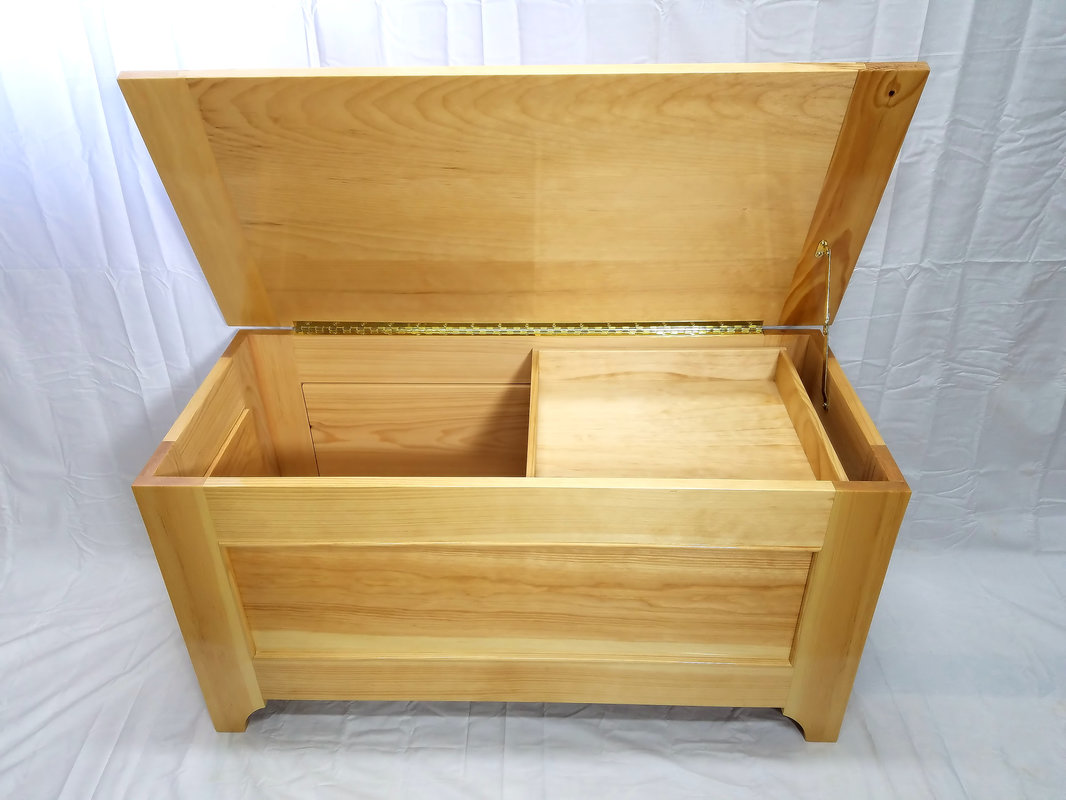HOW TO MAKE A WOODEN BLANKET CHEST
Watch Tommy make a pine blanket chest, as he shows you how he builds it. Hopefully covering all the information you need to build one yourself, but if we miss something let us know how we can help.
The chest is a frame and panel design built with 1" thick clear pine stock, if you choose to use something else just adjust accordingly for measurements. The first thing I did was cut all of the parts that make up the rails and styles of the chest. The front rails are 36" long by 4" wide. The rear rails are the same length but the width is different, the bottom is still 4" like the front but the top rail is only 3 and 7/8ths. " This will make sense at assembly, but it is to create a off set for the hinge. The rails for the sides are 12" long by 4" wide. And the styles are all 21 and 1/4" long, the front and rear styles are 4" wide and the side styles are 3 and 3/4" wide.

With all of my styles and rails cut to final size, using my hollow chisel mortising machine I cut my mortises. When I laid out my mortises I laid them out so that the bottom rails would be 4" up from the bottom of the chest and the top rails would be flush to the top of the styles. The exception being the top rear rail, this one would end up being 2 32nds short of the top of the styles, creating a off set for the hinge to sit in at assembly. My mortises for this are 1/2" wide by 1" deep and 3 and 1/2" long, the top rear rail being the same width and depth but it was 3 and 3/8ths long all mortises created center of the styles and rails.

The tenons I cut on my table saw with my miter gauge. Using the fence as a stop I made my shoulder cuts then made multiple passes to remove the remaining waist material. It was a one time set up to remove a 1/4" of material from all four sides.
With my tenons cut, I cleaned them up and fine tuned them testing the fit until it felt good. Making sure to mark them to that specific mortise to assure no issues at assembly. ( a to a, and b to b ect. )
Next I needed to cut a groove to accept the insert panels. This is just a centered 1/4" wide groove that I created using my router table. The grooves in the rails run from end to end, but the grooves in the styles are only from mortise to mortise. I did this by lowing the style on to the router bit center of the mortise opening then making my cut until I was center of the next mortise, then I would remove the style from the router table.
The last thing I needed to do at the router table was create a 1/2" stopped grove in all four styles that will make up the front and rear panels. With the groove created I used my chisel and squared up the rounded end. This groove will be to accept the tongue of the side styles at assembly.
To create the tongue in all four styles that help make up the side panels, I first cut a 1/4" rabbet in one edge of the style from one end to the other then repeated this on the same edge of that style but the opposite side. This left me with a 1/2" wide tongue. Then using my hand saw I cut the tongue to match the length of the groove, then removed the waste material with a chisel.
The last thing for me to do with the styles was to cut a curve at the bottom of all the styles, this is just for aesthetics and really you could just leave them straight if you wanted to. I laid this curve out so the it starts 1" under the bottom rail.
The insert panels are 1 inch thick. I cut a rabbet on all four sides, creating a tongue that is a 1/4" wide and a 1/2" deep. With panels being 1" thick this will cause the panels to sit into the chest to act as runners for the insert tray sit on.
With all of the parts for the chest case done I glued it together. Applying glue only in the mortises and to the tenon's, the panels are free floating. I did glued up all four panels individually and let the glue dry over night.
The next day I finished assembling the chest case, applying glue to the tongues of the side panels and also in the grooves of the front and rear panels, then clamped it up being sure to check that the chest was square from corner to corner.
With the chest case assembled I started on the bead molding. First cutting my stock into 3/8" strips at the table saw, then shaping the bead profile at the router table. Once I had my profile shaped I cut the molding to rough length and then used my hand plane to create the miters, removing just a small amount of material at a time until I had a perfect fit. I then glued it in place using painters tape to hold it until the glue dried.
Time for the breadboard lid. The lid is 36" long with out the bread boards by 19 1/2" wide and 1" thick. The breadboards are 3 7/8" wide by 19 1/2" long and 1" thick. First I cut a 1/2" by 1/2" groove center of both breadboards with the table saw. I then made my shoulder cuts in the lid at 2 1/2" in from the edge, then with my dado blade I removed the rest of the waste material, and with my hand planes I cleaned up the tongue I created for a good fit in the groove I created in the breadboards.
Once the breadboards fit good I cut my tenons, removing the waste material with my turning saw and squared everything up using my chisels and shoulder plane.
Next I placed the breadboard onto the tenons and marked the locations for each mortise then cut the mortises with the hollow chisel mortising machine. And after a little clean up I did a test fit and it looked good.
At this point I drilled the holes to peg the breadboards to the tenons, off setting the holes in the tenons from the breadboard holes slightly towards the shoulder of the tenons. Then elongated the holes in the tenons to allow for any wood movement. And with glue applied to the center mortise and tenon only I installed the breadboard then applied glue to the pegs and installed them. After the glue dried I cut the pegs down and cleaned them flush to the surface with a chisel then a card scraper.
For the bottom of the chest I cut a panel of 1" thick clear pine to fit the inside dimensions of the chest, attaching it with glue and a few brad nails to a 1 1/2" square support that runs the entire inside parameter of the chest attached flush to the bottom edge with screws. The screw holes are slightly oblong to allow for any wood movement.
Time to install the hardware. I attached the lid using a piano hinge 34" long. It fit perfectly into the off set going from the top of the rear styles to the upper rail, and was then attached flush to the rear of the under face of the lid using the screws that came with the hinge. When installing the support for the lid I did use a washer between the support and the inside wall of the chest, my concern was that this is where the support would rotate when opening and closing the lid and I did not want it to do any damage to the chest from it rubbing against it. The hardware installed great and I love the pop the brass adds to this chest.
The last thing to build was the insert tray, I made this from 1/2" thick clear pine. It is 18" long by 16 1/2" wide and 3 1/4" tall. I choose to assemble this tray with dovetail joinery, but you can assemble it any way you choose it is just a tray. I did not go into my process for cutting the dovetails for this tray because honestly this article would end up being twice as long if I did. With the tray completed it rests on the top edges of the insert panels where they extend into the inside of the chest, this allows the tray to slide from one end of the chest to the other.
For the finish I used General finishes arm-r-seal, sanding between coats until I achieved the look I was after.
Copyright © 2010-2023 By Tommy P and The Shavingwood Workshop all rights reserved
